| FUN FACTS |
 |
 |
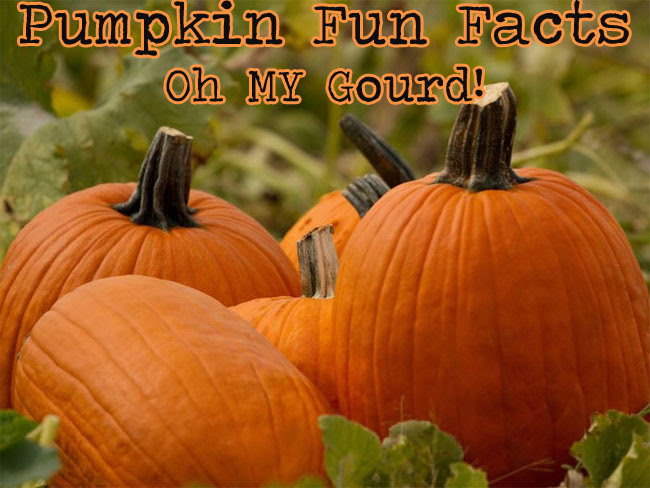 |
Pumpkins are believed to have originated in North America. Seeds from related plants have been found in Mexico dating back to 7000 to 5500 B.C. The name pumpkin originated from the Greek word for "large melon" which is "pepon." "Pepon" was changed by the French into "pompon."
Carving pumpkins into jack-o'-lanterns is a popular Halloween tradition that originated hundreds of years ago in Ireland. Back then, however, jack-o'-lanterns were made out of turnips or potatoes; it wasn't until Irish immigrants arrived in America and discovered the pumpkin that a new Halloween ritual was born.
Why Carved Pumpkins are a Symbol of Halloween. The tradition of carving faces into vegetables dates to the Celts. As part of their autumnal celebration, they wanted to light the way to their homes for the good spirits, so they carved faces into vegetables such as turnips and squash.
Eating pumpkin is good for the heart. The fiber, potassium, and vitamin C content in pumpkin all support heart health. Studies suggest that consuming enough potassium may be almost as important as decreasing sodium intake for the treatment of hypertension, or high blood pressure.
Over 1.5 billion pounds of pumpkin are produced each year in the United States.
The world's heaviest pumpkin weighed over 2,600 pounds.
Pumpkins are technically fruit. More specifically, they are a winter squash in the family Cucurbitacae, which includes cucumbers and melons.
Every single part of a pumpkin is edible. Yep, you can eat the skin, leaves, flowers, pulp, seeds, and even the stem!
The self proclaimed "Pumpkin Capital of the World" is Morton, Illinois where Libby has it's pumpkin industry and plant.
In the early 1800’s, decorative pumpkins called jack-o’-lanterns were carved to celebrate the autumn harvest season. Pumpkins proved to be much easier to work with than the potatoes and turnips of the past. In 1819, Washington Irving featured a mysterious jack-o’-lantern in his short story The Legend of Sleepy Hollow, which may have led to the carved pumpkin’s popular association with the Halloween holiday. |
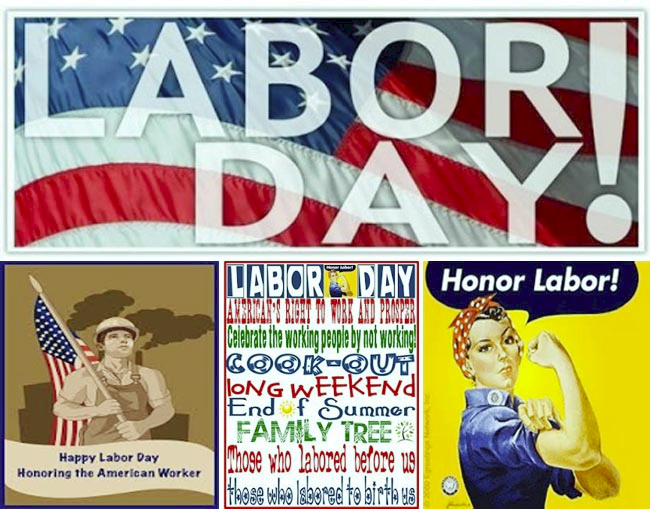 |
Most Americans consider Labor Day a uniquely American experience, but in all reality, Labor Day has it’s origins in Canada. Stemming from 1870’s labor disputes in Toronto, in 1872 a parade was held in support of a strike against the 58 hour workweek. As a result, 24 union leaders who were responsible for organizing the event were arrested under anti-union laws.
The first US observance of Labor Day came in the form of a parade. Sponsored by the Central Labor Union, On September 5th, 1882 ten thousand workers paraded through New York City. This is commonly considered the first observance of Labor Day in America.
The 12 hour work day norm. What’s outrageous enough to spur ten thousand people to parade through NYC? A 12 hour workweek! In the late 19th century, the average working day consisted of 12 hours. Held on a Tuesday, the first Labor Day rally was held in order to gain support for the 8 hour workday.
In February of 1887, the great state of Oregon was the first in the Union to pass law making Labor Day and officially recognized holiday.
Grover Cleveland makes Labor Day a national holiday. Making Labor Day an official national holiday as part of his political campaign, in 1894, President Grover Cleveland made good on his promise, and signed a law making Labor Day an officially recognized US holiday.
Although Labor Day hails from Canada and the US, a large number of industrialized nations around the world celebrate Labor Day as a time to respect and reflect upon workers around the world. While not all celebrate it at the end of summer, the concept is similar, and is sometimes celebrated in combination with May Day.
First Waffle House opens on Labor Day. In 1955, in Avondale Estates, Georgia, the very first Waffle House opened it’s doors to the public. 25 states and 50 years later, Waffle House now counts over 1500 establishments. Yay waffles!
Don’t Wear White?: We’ve all heard about the old-school etiquette rule about not wearing white after Labor Day. So where the heck did it come from? It’s hard to say, but this Time magazine article posits that it had to do with the well-heeled wearing white during their summer vacations and then changing back to dark colors for when they returned to the sooty, dusty city.
The vital force of labor added materially to the highest standard of living and the greatest production the world has ever known and has brought us closer to the realization of our traditional ideals of economic and political democracy. It is appropriate, therefore, that the nation pay tribute on Labor Day to the creator of so much of the nation's strength, freedom, and leadership — the American worker.
So there we have it. Perhaps a few things you already knew about Labor Day, but hopefully a few that you didn’t.
Have a safe, happy and healthy Labor Day! |
|
Variously known as the Fourth of July and Independence Day, but the tradition of Independence Day celebrations goes back to the 18th century and the American Revolution (1775-83).
We celebrate on July 4, the date in 1776 when the Declaration of Independence was adopted by the Continental Congress. Th Declaration of Independence, started the 13 colonies on the road to freedom. It wasn’t signed by most of the delegates until Aug. 2. And it didn’t become a legal federal holiday until 1941. As always, this most American of holidays will be marked with red, white and blue flags, fireworks, parades and backyard barbecues across the country.
Benjamin Franklin, John Adams, Thomas Jefferson, Roger Sherman and Robert R. Livingston comprised the Committee of Five that drafted the Declaration. Jefferson, regarded as the strongest and most eloquent writer, wrote most of the document.
The Declaration of Independence was signed by 56 men representing the 13 colonies. The moment marked the beginning of all-out war against the British. The American Revolutionary War is said to have started in 1775, however. The Declaration was signed more than two years after Boston officials refused to return three shiploads of taxed tea to Britain, fueling colonists to dump the tea into the harbor in what became the infamous Boston Tea Party.
Due to concerns about cracking the iconic instrument even more, The Liberty Bell has not been rung since 1846. Instead, every year, to mark the Fourth of July, the 2,000-pound bell is tapped 13 times a signal for bells across the country to start ringing.
Several countries used the Declaration of Independence as a beacon in their own struggles for freedom. Among them, France. Then later, Greece, Poland, Russia and many countries in South America.
It wouldn't be Independence Day without fireworks. The bulk of U.S. fireworks are imported from China.
There is a good chance that the beef hot dogs, steaks and burgers on your backyard grill came from the Lone Star State, which accounted for nearly one-sixth of the nation's total production. And if the beef did not come from Texas, it very well may have come from Nebraska or Kansas . Also Chances are that the pork hot dogs and sausages consumed on the Fourth of July originated in Iowa.
How did the Nathan’s Fourth of July Hot Dog Contest begin you may ask? It apparently started over a disagreement amongst 4 immigrants over who was the most patriotic!
Three of the first five U.S. presidents died on July 4. John Adams and Thomas Jefferson died in 1826, the 50th anniversary of the country’s birth. Adams’ last words were “Thomas Jefferson still survives.” James Monroe, the fifth president, died five years later in 1831. |
| |
|
Father's Day represents the day when we tell our dad how much he means to us and how lucky we are to have him in our life.
June 19, 1910, marked the first Father’s Day on record and originated in America. The person credited for inventing the concept of Father's Day is Mrs. Sonora Smart Dodd, whose father had raised his six children as a single-parent.
The first American president to support the concept of Father's day was President Calvin Coolidge, who did so in 1924.
Father’s Day was not recognized nationally on a large scale until 1966. President Lyndon Johnson designated the third Sunday of June to be Father’s Day.
1972 Father’s Day became an annual permanent holiday thanks to President Richard Nixon who signed Father’s Day as a public law.
In most countries around the world, like USA, UK, India, Canada, China, France, Greece, Japan and even Hong Kong, Father's Day is celebrated on the third Sunday of June.
Father's Day is celebrated most places on the third Sunday in June, but not everywhere. In Spain and Portugal, for instance, fathers are honored on March 19 (St. Joseph's Day). In Australia, it's the first Sunday in September
One of the most common gifts associated with Father's Day comprises of a necktie, followed by flowers. Rose is the official flower for Father's Day. Wearing a red rose signifies a living father, while white one represents deceased father.
It has been estimated that more than one-third of the cards sold on Father's Day are funny in nature and cards make up the fifth-largest card-sending holiday in the world.
Other traditional gifts for dad are fishing rods and golf clubs (sporting goods)
More than 85 million Americans participated at a barbecue in the last year — it is probably safe to assume many of these barbecues took place on Father's Day.
"Any man can be a Father but it takes someone special to be a dad." -- Anne Geddes
Happy Father's Day to all you wonderful Dad's! |
| |
|
1. Memorial Day is a patriotic holiday that is celebrated in remembrance of all the brave service men and women who have sacrificed their lives for our country.
2. Originally, Memorial Day was designated to honor Civil War dead. Later it was changed to honor all Americans who have given their lives in the service of our country.
3. Memorial Day is celebrated on the last Monday in May. The last Monday of May was chosen to coincide with the time when flowers would be blooming all over the country.
4. Flowers and flags are placed on graves in remembrance. Parades and dedications of memorials usually are part of the day's activities. Boy Scouts, Girl Scouts, local marching bands, members of the armed service, fire departments, police departments and fraternal orders often march in parades and attend services and ceremonies to commemorate the day.
5. Waterloo, N.Y. is considered the birthplace of this holiday because the people of Waterloo were the first people to proclaim a day on May 5, 1866 to honor the soldiers who died in the Civil War. They closed their businesses and placed flowers and flags on the graves of their soldiers. Flags were flown at half-mast.
6. On Memorial Day, the flag should be flown at half-staff until noon, then raised to the top of the staff.
7. The custom of wearing red poppies on Memorial Day started in 1915 and was inspired by Moina Michael’s poem “In Flanders Fields”: “We cherish too, the Poppy red / That grows on fields where valor led, / It seems to signal to the skies / That blood of heroes never dies.”
8. In 1951, the Boy Scouts and Cub Scouts of St. Louis began placing flags on the 150,000 graves at Jefferson Barracks National Cemetery, a practice to this day. Since the late 1950's, on the Thursday just before Memorial Day, around 1200 soldiers of the 3rd US Infantry place small American flags at each of more than 260,000 gravestones at Arlington National Cemetery. They then patrol 24 hours a day during the weekend to ensure that each flag remains standing.
9. In 1971, Congress declared Memorial Day a national holiday.
10. In 2000, the National Moment of Remembrance Resolution passed. At 3 pm on Memorial Day, all Americans are asked to observe a moment of remembrance and respect by pausing from whatever they are doing for a moment of silence or listening to taps. |
| |
|
- Mother's Day has origins in ancient Greek and Roman festivals celebrating the mother goddesses Juno and Cybele.
- In May 1914, The U.S. Congress passed a law designating the second Sunday in May as Mother's Day. This year Mother's Day falls on Sunday, Mother's Day is May 11th 2025.
- "Mothering Sunday" dates back to the 16th century and is a considered a precursor to the modern Mother's Day.
- The first Mother's Day was celebrated in the US in 1908 when Anna Jarvis honored her mother Ann Jarvis with a memorial. Ann Jarvis had started a committee in 1868 to establish ‘Mother's Friendship Day'. Her motivation had been to reunite families after the Civil War. She died in 1905, before Mother's Day became a holiday.
- In 1912, Anna Jarvis trademarked both ‘Mother's Day' and ‘the second Sunday in May'. She also created Mother's Day International Association.
- President Woodrow Wilson signed a proclamation making Mother's Day a national holiday in 1914.
- 133 million cards exchanged annually, according to Hallmark, making it the third-largest card-sending holiday in the U.S.
- Approximately 122 million phone calls are made to moms on Mother's Day in the United States.
- There are approximately 2 billion mothers in the world, with 4 babies born each second.
- In most countries and languages, the word for mother begins with 'm'.
- Mother's Day is celebrated in close to 50 countries in different parts of the world.
- Of all the flowers bought for holidays, one quarter are purchased for Mother's Day. Research has proven that there are actually health benefits to receiving flowers.
|
| |
 |
The first Earth Day was celebrated on April 22, 1970. An environmental movement was born as a result.
Earth Day originated in the US but became recognized worldwide by 1990.
Every year in April, men, women, and children collect garbage, plant trees, clean up water ways , show movies about Mother Earth, pollution, climate change and plan for a better future for our planet.
Gaylord Nelson founded Earth Day while he was working as a US senator. It was first organized in 1970 to promote ecology and respect for life on the planet as well as to encourage awareness of the growing problems of air, water and soil pollution.
Earth Day was renamed officially by the UN in 2009 as International Mother Earth Day.
Some schools and communities celebrate Earth Day for a whole week or even the entire month to expand the time frame that people focus on the earth and how they can preserve it and make it a better place for all.
On Earth Day 2012, more than 100,000 people rode bikes in China to reduce CO2 emissions and save fuel.
In an Earth Day celebration in 2011, 28 million trees were planted in Afghanistan by the Earth Day Network.
In Panama, 100 endangered species of orchids were planted and maintained to prevent their extinction in honor of Earth Day.
Symbols used to describe Earth Day include: an image or drawing of planet earth; a tree, a flower or leaves depicting growth; or the recycling symbol.
People create about 2.6 trillion pounds of garbage each year. That’s heavier than 225 million adult elephants. In the United States, we throw away 250 million tons of garbage every year. That’s enough garbage to cover the state of Texas entirely with trash—twice. On average, each person in the United States makes 4.5 pounds of trash each a day.
Remember the three R'S ~ reduce, reuse, and recycle. When we put the three R's into practice in our daily lives we save natural resources, save space in our landfills, save energy, reduce pollution and save money!
We have added a fourth R to the list..Repair!- Electronics and E-Waste are quickly becoming the fastest growing pollutant. No matter what manufacturers try tell you, there is no such thing as a green electronic. Modern gizmos are notoriously disposable. Cell phones have an average lifespan of just 18 months. Laptops and tablets with sealed-in batteries lose their capacity to fully charge after only a couple of years. We all know the irresistible lure of faster, newer, sleeker devices that attract us almost on a weekly basis. So, this Earth Day, don’t just drop off your broken phone or your old computer at the corner e-waste drive. Repair it. Then keep using it, or give it away.
Reduce. Reuse. Repair and Recycle. Good Planets are Hard to Find!
Happy Earth Day |
|
- Presidents' Day was originally a holiday to honor America's first president and founding father George Washington. As such, the celebration took place each year on Washington's birthday until the Uniform Monday Holiday Act of 1971 renamed the holiday Presidents' Day and mandated that it would be celebrated on the third Monday of February each year.
- One tradition that takes place each year is the Senates' reading of President George Washington's 1796 Farewell Address. This tradition began in 1862 on Washington's birthday as an attempt to boost morale during the Civil War and has been continued since.
- Traditionally, many celebrated and continue to celebrate Washington's Birthday with desserts made with cherries. Cherry pie, cherry cake, bread made with cherries, or just a huge bowl of cherries are often enjoyed on this day. Of course, this relates to the apocryphal story that Washington would not tell a lie when asked if he cut down a cherry tree.
- Washington’s Teeth Weren’t Wooden, Contrary to popular belief, the country’s first president had dentures made of gold, ivory, lead, and animal teeth.
- Adams Used To Skip School As a young boy, John Adams would often skip school, choosing instead to spend his time hunting and fishing.
- Thomas Jefferson Founded The University Of VirginiaJefferson founded the university in 1819 on land that once belonged to eventual President James Monroe. Jefferson is the only president to have ever founded an institution of higher learning.
- Madison Was Princeton’s First Grad Student After finishing his undergraduate degree in 2 years, James Madison stayed at the university for an additional year, making him the Ivy League institution’s first graduate student.
- John Quincy Adams Regularly Skinny-Dipped In The Potomac Adams was known for his early morning dips in D.C.’s main waterway, always in the nude.
- Andrew Jackson Taught His Parrot To Curse The parrot had to be removed from President Jackson’s funeral because it wouldn’t stop swearing.
- Franklin Pierce Didn’t Swear His Oath Of Office He instead affirmed it, placing his hand on a law book rather than the Bible.
- At 6'4" and 180 pounds, Abraham Lincoln was the tallest American president, while James Madison was the smallest president at 5'4" and just 100 pounds.
- Abraham Lincoln's Birthday is Not a Federal Holiday, even though many states celebrate Abraham Lincoln's birthday concurrently with Washington's birthday, it is not a federally designated holiday.
- One would think that every American president would be well traveled, but prior to Ulysses S. Grant, no president had seen the Pacific Ocean or visited Hawaii. Grant set many presidential travel firsts, as he was the first to see the Great Wall of China and visit Egypt, among other foreign destinations.
- Ulysses S. Grant Got A Speeding Ticket On A Horse The 18th President Of The United States was given a $20 speeding ticket for riding his horse too fast down a Washington street.
- While nearly every president since Washington had animals of some kind, the first notable presidential pet was Warren G. Harding's Airedale terrier, Laddie Boy, who became a celebrity of sorts—and even had his own special chair in which he could sit during cabinet meetings.
- Most potential presidents' love lives are scrutinized before they make it into the Oval Office—and so far there have been more married commanders in chief than there have been bachelors. James Buchanan was the first unmarried man to be elected president, while Ronald Reagan was the first to have been divorced.
- In 1886, Grover Cleveland became the first president to marry in the White House and his wife, Frances Folsom Cleveland, became the youngest first lady at just 21. Despite a 27-year age difference, their romance bloomed when Frances and and her mother visited the president at the White House the spring after his inauguration.
- The tradition of a president throwing the "first pitch" for baseball season started with William H. Taft, the 27th president, at an opening-day game between the Washington Senators and the Philadelphia Athletics on April 4, 1910. Since then, every president except Jimmy Carter has opened at least one baseball season during his term.
- Martin Van Buren was the first President born an American citizen - (all before him were born in the British colonies).
- McKinley Was Tech-Savvy William McKinley was the first presidential candidate to campaign using the telephone and campaign buttons
- Theodore Roosevelt Had Really Bad Asthma In his early childhood, Teddy Roosevelt suffered from very severe asthma. Because there were no inhalers or special treatments for asthma at the time, he was often sick as a young boy. However, he began to regularly exercise in order to combat the illness and, aside from the occasional asthma attack, he eventually overcame it.
- Woodrow Wilson Had A Ph.D. To date, he’s the only president to hold a doctorate degree, making him the highest educated president in the history of the United States. He was awarded the degree in Political Science and History from Johns Hopkins University. He also passed the Georgia Bar Exam despite not finishing law school.
- Warren Harding Lost The White House China In A Poker Game Harding really like to gamble, although it seems he wasn’t very good at it. In one poker game, he bet the White House china collection and lost it all in one hand.
- Bill Clinton Is A Two-Time Grammy Winner Clinton took home the 2004 Grammy for Best Spoken Word Album For Children along with Mikhail Gorbachev and Sophia Loren for their narration on the Russian National Symphony’s “Wolf Tracks and Peter and the Wolf”. Then in 2005, he won the Best Spoken Word Grammy for the audiobook of “My Life”. His wife, Hillary Clinton, also won a Best Spoken Word Grammy for the audiobook of 1997’s “It Takes A Village”.
- George W. Bush Was A Cheerleader In High School As a high school student, in addition to playing baseball, George W. Bush was the school’s head cheerleader. He would often organize exuberant pep talks and skits during weekly assemblies.
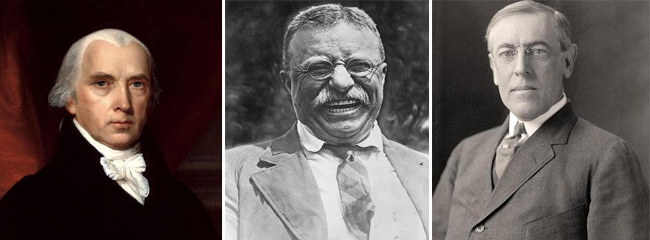
|
| |
| |
 |
The first documented decorated Christmas Tree was in Riga, Latvia in 1510.
The first printed reference to Christmas trees appeared in Germany in 1531.
Christmas trees have been sold commercially in the United states since about 1850.
The first Christmas tree retail lot in the United States was started in 1851 in New York by Mark Carr.
Since 1966, the National Christmas Tree Association has given a Christmas tree to the President and first family.
In 1856 Franklin Pierce, the 14th President of the United States, was the first President to place a Christmas tree in the White House.
Growing Christmas trees provides a habitat for wildlife.
Recycled trees have been used to make sand and soil erosion barriers and been placed in ponds for fish shelter.
Christmas trees remove dust and pollen from the air.
More than one million acres of land have been planted in Christmas trees.The industry employs over 100,000 people.
More than 2,000 trees are usually planted per acre. Almost all trees require shearing to attain the Christmas tree shape. At six to seven feet, trees are usually ready for harvest.
Christmas trees take an average of 7-10 years to mature.
Christmas trees are grown in all 50 states including Hawaii and Alaska.
93% of real Christmas tree consumers recycle their tree in community recycling programs, their garden or backyard.
Approximately 2-3 seedlings are planted for every harvested Christmas tree.
Since 2003 Dee's Nursery from Oceanside, Long Island, New York has been Delivering the spirit of Christmas to military families one Christmas Tree at a time via the Trees for Troops program.
Since 1971, the Province of Nova Scotia has presented the Boston Christmas Tree to the people of Boston in gratitude for the relief supplies received from the citizens of Boston after a ship exploded in 1917 following a collision in the Halifax, Nova Scotia Harbor. Part of the city was leveled killing and injuring thousands.
Between 1887-1933 a fishing schooner called the "Christmas Ship" would tie up at the Clark Street bridge and sell spruce trees from Michigan to Chicagoans.
You should never burn your Christmas tree in the fireplace. it can contribute to creosote buildup and is not safe.
In the first week, a tree in your home will consume as much as a quart of water per day.
Thomas Edison's assistant, Edward Johnson, came up with the idea of electric lights for Christmas trees in 1882.
Christmas tree lights were first mass produced in 1890.
Merry Christmas. |
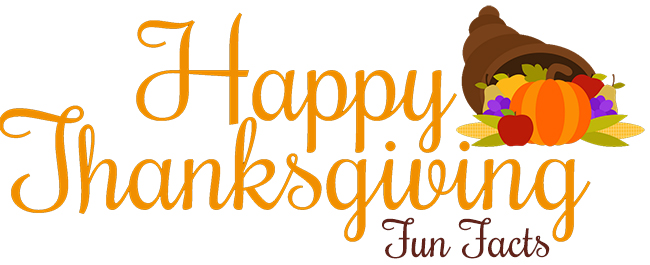 |
The traditional cornucopia was a curved goat's horn filled to brim with fruits and grains. According to Greek legend, Amalthea (a goat) broke one of her horns and offered it to Greek God Zeus as a sign of reverence. As a sign of gratitude, Zeus later set the goat's image in the sky also known as constellation Capricorn. Cornucopia is the most common symbol of a harvest festival. A Horn shaped container, it is filled with abundance of the Earth's harvest. It is also known as the 'horn of plenty'.
91% of Americans eat turkey on Thanksgiving Day. There are regional differences as to the "stuffing" (or "dressing") traditionally served with the turkey. Southerners generally make theirs from cornbread, while in other parts of the country white bread is the base. One or several of the following may be added: oysters, apples, chestnuts, raisins, celery and/or other vegetables, sausage or the turkey's giblets.
The wild turkey plays a significant role in the cultures of many Native American tribes all over North America. Outside of the Thanksgiving feast, it is a favorite meal in eastern tribes. Eastern Native American tribes consumed both the eggs and meat, sometimes turning the latter into a type of jerky to preserve it and make it last through cold weather. The feathers of turkeys also often made their way into the rituals and headgear of many tribes. Many leaders, such as Catawba chiefs, traditionally wore turkey feather headdresses. Significant peoples of several tribes, including Muscogee Creek and Wampanoag, wore turkey feather cloaks. Movements of wild turkeys inspired the Caddo tribe's turkey dance. The Navajo people of Southeastern Arizona, New Mexico and Utah call the turkey tázhii and relate the bird to the corn and seeds which The Turkey in Navajo folklore brought from the Third Navajo World. It is one of the Navajos' sacred birds, with the Navajo people using the feathers and parts in multiple traditional ceremonies.
The first known Thanksgiving feast or festival in North America was celebrated by Francisco Vásquez de Coronado and the people he called "Tejas" (members of the Hasinai group of Caddo-speaking Native Americans). However, The Plymouth Pilgrims dined with the Wampanoag Indians for their first Thanksgiving and it lasted for three days. The first Thanksgiving was not a feast, but rather a time when Native Americans helped Pilgrims by bringing them food and helping them build off the land.
Turkeys were one of the first animals in the Americas to be domesticated.
The idea that Benjamin Franklin preferred the turkey as the national bird of the United States comes from a letter he wrote to his daughter Sarah Bache on January 26, 1784.
Corn is one of the popular symbols of Thanksgiving. It came in many varieties and colors - red, white, yellow and blue. Some Americans considered blue and white corn sacred. The oldest corns date 7000 years back and were grown in Mexico
The sweet potato is also popular side dish. North Carolina, California and Mississippi are the top producing states of sweet potato and together generate an estimated 2.4 billion pounds of the tubers.
The cranberry is also a symbol and a modern diet staple of Thanksgiving. Originally called crane berry, it derived its name from its pink blossoms and drooping head, which reminded the Pilgrims of a crane. Pumpkin Pie is also a popular modern traditional dish. According to the Guinness Book of World Records, the largest pumpkin pie ever baked weighed 2,020 pounds and measured just over 12 feet long. It was baked on October 8, 2005 by the New Bremen Giant Pumpkin Growers in Ohio, and included 900 pounds of pumpkin, 62 gallons of evaporated milk, 155 dozen eggs, 300 pounds of sugar, 3.5 pounds of salt, 7 pounds of cinnamon, 2 pounds of pumpkin spice and 250 pounds of crust. (woooooo)
It was not until 1941, that congress declared Thanksgiving as a national holiday. Sarah Josepha Hale petitioned for a national Thanksgiving holiday for close to 40 years, believing that "Thanksgiving, like the Fourth of July, should be considered a national festival and observed by all our people."
Thanksgiving in Canada is celebrated on a different day than in the US, on the second Monday in October (the observance of the day began in 1879). Canadians sometimes call the Thanksgiving in the US as “Yanksgiving” to distinguish it from the Canadian Thanksgiving holiday and their own Thanksgiving traditions.
Originally known as Macy’s Christmas Parade—to signify the launch of the Christmas shopping season—the first Macy’s Thanksgiving Day Parade took place in New York City in 1924. It was launched by Macy’s employees and featured animals from the Central Park Zoo. Today, some 3 million people attend the annual parade and another 44 million watch it on television. Snoopy has appeared as a giant balloon in the Macy’s Thanksgiving Day Parade more times than any other character in history.
Thanksgiving Day football games in the United States are nearly as old as the game—and the organized holiday—itself. The first Thanksgiving Day football game took place in Philadelphia, Pennsylvania on Thanksgiving Day of 1869, less than two weeks after Rutgers defeated Princeton in New Brunswick, New Jersey in what is widely considered to have been the first American Football game. Virtually every level of football, from amateur and high school to college and the NFL plays football on Thanksgiving Day
The North American holiday season (generally the Christmas shopping season in the U.S.) traditionally begins when Thanksgiving ends, on "Black Friday" (the day after Thanksgiving); this tradition has held forth since at least the 1930s. However we now have Cyber Monday. It is a marketing term for the Monday after the Thanksgiving holiday in the United States. The term "Cyber Monday" was created by marketing companies to persuade people to shop online.
Wishing You and Your Family A Very Happy and Blessed Thanksgiving! |
| |
| |
| |
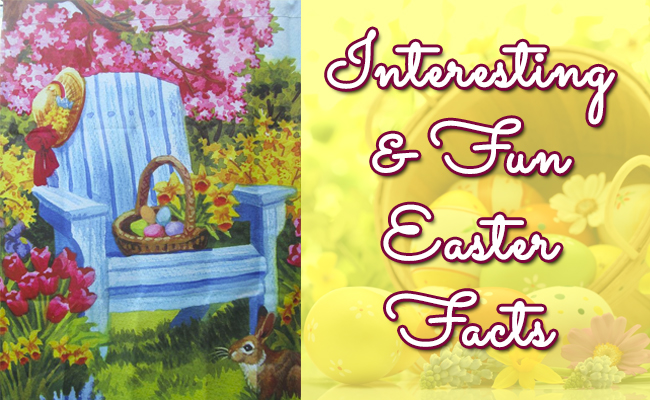 |
Easter is really an entire season of the Christian church year, as opposed to a single-day observance. Lent is the 40-day period leading up to Easter Sunday. The day before Lent, known as Mardi Gras or Fat Tuesday, is a last hurrah of food and fun before Lent begins.
The week just befor Easter Sunday is called Holy Week .
Easter has been named after Eastre, an Anglo-Saxon goddess. The symbols of the goddess are the hare and the egg. Other scholars trace the name of the holiday to the Latin phrase “hebdomada alba,” which means “white week.”
Apart from English and German, the name of 'Easter' has been derived from Pesach, the Hebrew name of Passover festival.
The customary act of painting eggs is known as Pysanka. The custom of giving eggs at Easter dates back to the time of the Egyptians, Persians, Gauls, Greeks and Romans.
Just like Passover which is dependent on the phases of the moon and has different dates each year so does Easter.
Easter always falls between March 22nd and April 25th.
The first Easter basket was given the appearance of a bird's nest.
Chocolate eggs were made for the first time in Europe, in the 19th century. They remain one of the favorite Easter treats.
Easter is the top-selling confectionery holiday in the west, second only to Halloween.
On Easter, 76% people bite off the chocolate bunny ears first, while 5% bite the feet first and 4% eat the tail first.
Easter is known by different names across the world. Some of them are: English - Easter, French - Paques, Spanish - Pascua, Italian - Pasqua, Albanian - Pashke, German - Ostern, Greek - Pascha, Norway - Paaske, Holland - Pasen and Swedish - Pask.
Eggs, bonfires, candles, lily, cross, palm, bunny and lamb are the most popular symbols of Easter.
Hot cross buns, made by European monks, are counted amongst the earliest Easter treats. Pretzels were also originally associated with Easter. They are thought to be invented by ancient German monks and were created in a pattern to represent two folding arms in prayer. Some people believe that the pretzel is the world’s oldest snack food!
The Easter Bunny originated in Germany, the idea was taken to America during the 1700s.
In 1879, the tradition of the Easter egg roll on the grounds of the White House began. Arranged by the 19th president of America, Rutherford Hayes and his wife Lucy. The tradition is still in practice today and occurs on the Monday after Easter weekend.
Easter is the reason why we use the Gregorian calendar. By the 16th century, scholars realized that the Julian calendar was out of sync with the solar year, and that Easter was falling further away from the spring equinox. In an effort to close the gap, Pope Gregory XIII introduced the Gregorian calendar. Because of old religious rivalries, Protestants in Europe were dead set against the change. It wasn’t until 1752 that England adopted the Gregorian calendar. On that day, the country skipped forward 11 days overnight, going from Wednesday, September 2, to Thursday, September 14. Orthodox Christians still use the Julian calendar to calculate when Easter will occur and typically celebrate the holiday a week or two after the Western churches, which follow the Gregorian calendar. The Gregorian calendar is still the most widely used calendar today.
Happy Spring & Happy Easter! |
| |
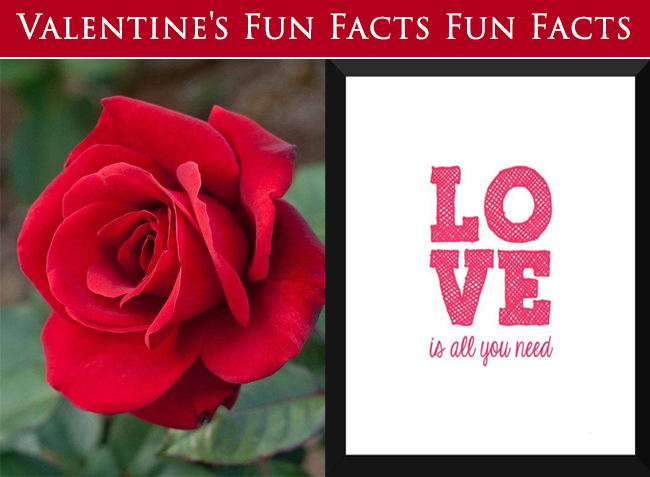 |
Valentine’s Day started as a form of rebellion. The most popular theory about Valentine’s Day origin is that Emperor Claudius II didn’t want Roman men to marry during wartime. Saint Valentine went against his wishes and performed secret weddings, which means this day was originally founded on an act of rebellion!
Saint Valentine is the patron saint of lovers and engaged couples. He is also the patron saint of epilepsy (which he is rumored to have suffered from), plague, greetings, travelers, young people, and bee keepers.
Approximately 224 million roses are grown for Valentine’s Day. Red roses were the favorite flower of Venus, the Roman goddess of love, as the bud stands for strong romantic feelings, and red roses make up the vast majority of roses sold each year.
Valentine’s Day is apparently worth $18.6 billion (yes, with a B). People will spend $1.6 billion on candy, $1.9 billion on flowers, and $4.4 billion on diamonds, gold, and silver. About 1/5 of all Valentine’s Day shopping was done online and 40.7% of people admit they will use their smartphones to purchase Valentine’s gifts.
64 percent of people who buy flowers on this day are men, while 24 percent are women.
15 percent of U.S. women send themselves flowers on Valentine's Day.
Red roses are considered the flower of love because the color red stands for strong romantic feelings.
Valentine's Day and Mother's Day are the biggest holidays for giving flowers.
Cupid is associated with Valentine’s Day because he was the son of Venus, the Roman god of love and beauty.
The most fantastic gift of love is the Taj Mahal in India. It was built by Mughal Emperor Shahjahan as a memorial to his wife.
Over 50 percent of all Valentine's Day cards are purchased in the six days prior to the holiday.
In order of popularity, Valentine's Day cards are given to teachers, children, mothers, wives, sweethearts and pets
There are an average of 220,000 marriage proposals each Valentine's Day (10 percent of the annual total).
Hallmark produced its first Valentine Card in 1913.
Today, Hallmark employs an 80-person research staff to analyze the sales pattern of previous valentines. That analysis, combined with more than 100,000 annual customer interviews, focus groups and in-store observations, will help create roughly 2,000 cards in Hallmark's core Valentine's Day line.
Each year, enough candy hearts (approximately 8 billion of them) are produced to stretch from Valentine, Arizona to Rome, Italy -- and back again.
On Valentine’s Day 2010, 39,897 people in Mexico City broke the record for the world’s largest group kiss.
More than 8 billion conversation hearts are manufactured each year. Conversation Hearts were invented in 1866, and about 10 new sayings are added each year. Conversation hearts have a shelf life of five years.
Lace is commonly used in Valentine's Day Decorations. It comes from the Latin lacques, which means to snare or to net, as in catch a person's heart.
Each year 300,000 letters go through Loveland, Colorado, to get a special heart stamp cancellation for Valentine’s Day.
According to the condom company Durex, condom sales are highest around Valentine's Day, which are 20–30% higher than usual.
More at-home pregnancy tests are sold in March than in any other month.
On February 14 an alternate Valentine’s Day celebration is SAD (Single Awareness Day), which reminds people that they don’t need to be in a relationship to celebrate life.
On Valentine’s Day, James Cook was killed by natives in Hawaii (1779), Oregon and Arizona were admitted to the Union (1859 and 1912, respectively), James Polk became the first president photographed while in office (1848), UPS (United Parcel Service) was formed (1919), the League of Women Voters was established (1920), Aretha Franklin recorded “Respect” (1967), Richard Nixon installed a secret taping system in the White House (1971), the U.S. performed a nuclear test at the Nevada Test Site (1976), and Voyager took a picture of the entire solar system (1990)
Happy Valentine's Day!
|
| |
 |
New Years is one of if not the oldest of all holidays, as it was first observed in ancient Babylon as many as 4000 years ago. The tradition of making New Year resolution dates back to the early Babylonians. Celebrating New Year on January 1 is purely arbitrary, many countries celebrate it in spring, the season of rebirth of new crops. (this includes ancient Babylon).
The Roman senate declared January 1 as the New Year in 153 BC. Though even this date saw major tampering depending on who was Emperor at the time, it was Julius Caesar who again declared January 1 in the Julian calendar as the New Year, in 46 BC.
January 1 was revived as the New Year in 1582, by the Gregorian calendar and so celebrated by most countries to date.
Noise Making and fireworks on New Year's Eve is believed to have originated in ancient times, when noise and fire were thought to dispel evil spirits and bring good luck.
In Scotland, New Year's Day is often considered more important than Christmas. It dates back to the time of pagan festivals for the winter solstice.
The Time Square New Year's Eve Ball came about as a result of a ban on fireworks. The first ball, in 1907, was an illuminated 700-pound iron and wood ball adorned with one hundred 25-watt light bulbs. Today, the round ball designed by Waterford Crystal, weighs 11,875-pounds, is 12 feet in diameter and is bedazzled with 2,668 Waterford crystals. Due to wartime restrictions, the New Year's Eve ball was not lowered in 1942 and 1943.
Throughout the year, visitors to Times Square in New York City write their New Year's wishes on pieces of official Times Square New Year's Eve confetti. At the end of the year, the wishes are collected and added to the one ton of confetti that showers the crowd gathered in Times Square in celebration of the New Year.
Auld Lang Syne is sung at midnight to toast in the New Year. The song was composed by Robert Burns sometimes in the 1700's. The term means "old long ago" or "the good old days." No one knows for certain when it became an inseparable part of the New Year's Eve tradition.
It is often thought that the first visitors you see after ringing in the New Year would bring you good or bad luck, depending on who you keep as friends and enemies. That's why most people celebrating on New Year's Eve often do so with friends and family.
Items or food that are ring-shaped are considered good luck. This symbolizes "coming full circle", which is what one year does. Some cultures eat ring-like food through the evening and through the night to ensure that good luck will be bestowed upon everyone who eats them. The Dutch often eat doughnuts.
Firecrackers and noisemakers became a part of New Year's Day in order to scare away any remaining evil spirits and ensure a fresh New Year's start and
in some cultures, the front door to the home is left open at midnight to let the old year out and the new one in.
It is believed that 40 to 45 percent of American adults make one or more resolutions each year. The top New Year's resolutions include weight loss, exercise, quitting smoking and better money management. By the second week of January, 25 percent of people have abandoned their resolutions.
|
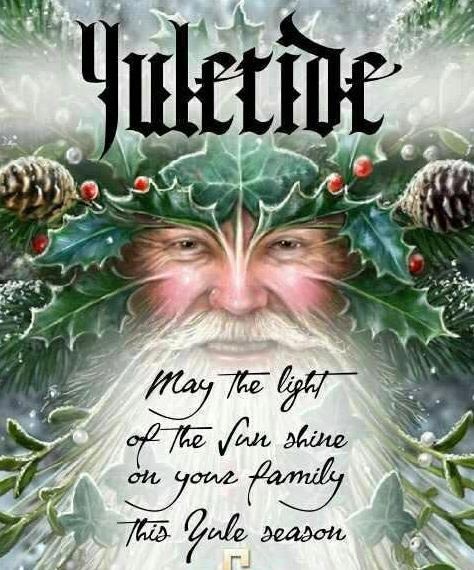 |
The Twelve Days of Yuletide
We all sing about the Twelve Days of Christmas, but you might not have realized that the pagan celebration of Yule is twelve days long, starting with the winter solstice on December 21 and ending on January 1.
Initially, it’s important to note that back when people followed a lunar calendar there were twelve days “leftover” at the end of the year. These twelve nights became a special time where the veil between the worlds was thin and celebrations abounded. Yuletide dates have varied just a bit through the years, but were almost always twelve days in length. Some articles say the pre-modern celebration often started on December 23 and went through January 3. In ancient Rome, the festival of Saturnalia (honoring Saturn—the god of agricultural bounty) lasted about a week at this time of year. (Christmastide is also twelve days long from December 25 through January 6th —Epiphany.)
What Does Yuletide Celebrate?
Beginning with the Winter Solstice celebration, Yuletide kicks off with a celebration of the lengthening amount of sunlight that we welcome as we move away from the day with the least “daytime” during the year. Indeed, nearly every celebration has origins invoking the rebirth of the sun or the sun god in some way. This is also referred to as Mother’s Night, honoring the Mother Goddess (& the coming of spring) along with the protective female ancestors who watch over us.
There are many winter solstice celebrations across the globe. The most well-known are likely at Stonehenge in England and Newgrange in Ireland, structures built thousands of years ago directly oriented to the sun.
There is not a lot of information known about how the middle days of Yule were historical celebrated. Some references talk about it being a time of feasting where little or no work was done. Modern practices include the nightly lighting of candles honoring the Nine Noble Virtues which come from Odinism or Asatruism.
Yuletide concludes with the celebration on the Twelfth Night, which often coincides with the modern New Year celebration—full of revelry, food, and drink. The Twelfth Night is also associated with the burning of the greens for good luck. This is not directly attributable to pagan culture or Yuletide, but seems to be linked more to Christian Epiphany. (However, I liked the timing of this so much that I adopted it as part of the pagan culture’s Twelfth Night in my Circle of Nine series.) Modern pagans often have a Yule tree as part of their celebration, although it is noted that pre-Christian pagans would likely not have done so. Instead, they would have only cut boughs of evergreens for decoration within their homes. These may have been left up until Imbolc at the beginning of February when they would have been removed and possibly burnt.
Other traditions that were initially part of the pagan or pre-Christian festival of Yule have come to be part of the Christmas tradition, including the use of holly and ivy and mistletoe as decorations, the burning of the Yule log, and gift giving, which was an important part of the Roman Saturnalia festival. And, of course, songs were sung in celebration at the time of the winter solstice and throughout Yuletide.
https://www.youtube.com/watch?v=e4IeOjpe2p8 |
| |
| |
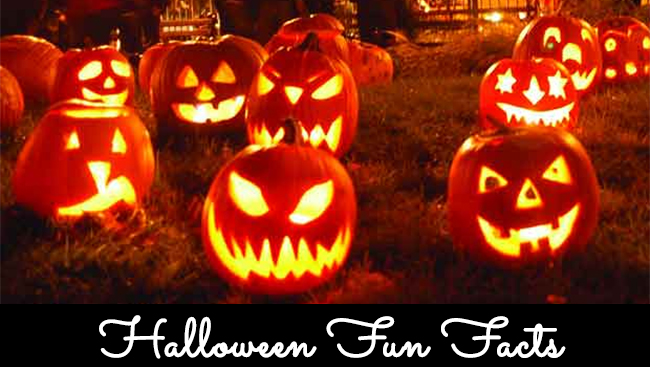 |
Trick-or-treating dates back to the Middle Ages and All Souls’ Day. The name Halloween comes from a shortening of the holiday’s former title, All Hallow’s Eve, which was the night before All Hallows’ (sanctified or holy) Day, or Hallowmas on November 1.
Halloween originated from a Samhain, Ireland’s Celtic festival, which celebrates the end of the harvest season.
When trick-or-treating first became popular in the United States in the 1800's, more children played mischievous pranks than asked for candy. By the 1950's however the focus shifted from pranks to candy and costumes. The candy-collecting tradition has spread from the United States to Canada, Australia, and Western Europe, where more and more little goblins now trick-or-treat.
Chocolate makes up about three-quarters of a trick-or-treater’s candy with Snickers being # 1, according to the National Confectioners Association. Halloween candy sales average about 2 billion dollars annually in the United States.
Halloween is the 2nd most commercially successful holiday, with Christmas being the first.
Candy corn has been made with the same recipe by the Jelly Belly Candy Company since around 1900.
Orange and Black are the colors of Halloween because Orange represents Harvest and Black represents darkness and the unknown.
Halloween was brought to North America by immigrants from Europe who would celebrate the harvest around a bonfire, share ghost stories, sing, dance and tell fortunes.The ancient Celts thought that spirits and ghosts roamed the countryside on Halloween night. They began wearing masks and costumes to avoid being recognized as human.
Bobbing for apples is thought to have originated from the roman harvest festival that honors Pamona, the goddess of fruit trees.
The act of carving Jack-o’-Lanterns is from Celtic folklore. A drunken farmer named Jack tricked the devil but then he wasn’t allowed into either heaven and hell limbo, Jack made a lantern from a turnip and a burning lump of coal that the devil threw from hell. So Celts placed Jack-o’-Lanterns with frightening faces outside to scare evil spirits away.People continued to carve faces into hollowed-out turnips, but when the Irish potato famine of 1846 forced families to flee to North America, turnips were hard to come by. People kept the tradition alive by using pumpkins as a substitute.
Happy Haunting! |
| |
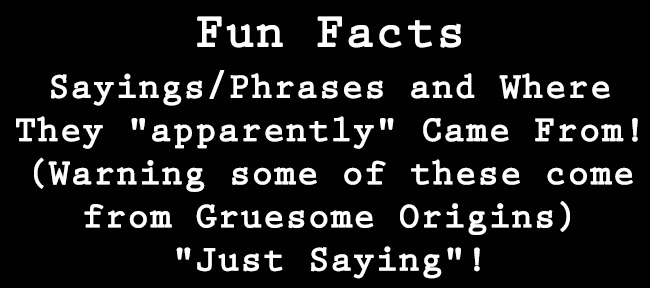 |
Rob Peter to Pay Paul~ Meaning: This expression is often used to refer to a bad deal. In the mid-1700s the ancient London Cathedral of St. Paul’s was falling apart.The strain on the treasury was so great that it was decided that it would merge with the diocese of the newer St. Peter’s Cathedral in order to absorb and use their funds to repair the crumbling St. Paul’s. The parishioners of St. Peter’s resented this and came up with the rallying cry, they’re “robbing Peter to pay Paul.”
Straight and narrow~ Meaning: Living a legal, moral, and disciplined life. The expression was referred to in The Pilgrim’s Progress by English writer John Bunyan (1628-1688). In that inspirational book, Pilgrim, the representative of every-man, must follow the “straight and narrow.” The phrase has a biblical origin in Matthew 7:14: “Broad is the way that is the path of destruction but narrow is the gate and straight is the way that leadeth to the house of God.”
Raining Cats and Dogs~ The general legend about “raining cats and dogs” relates to the thatched roofs of the Middle Ages. It would have you believe that when it rained, all sorts of creatures, including cats and dogs, slipped and fell in such abundance that it gave rise to the expression, but that’s wrong. The truth is that the saying predates even the Dark Ages and goes back to a time when people believed that ghosts and goblins were around every corner. Cats and dogs had magical, mystical powers. Sailors believed that cats brought on storms and that witches rode those storms (with their cats).To the early Norsemen, dogs and wolves symbolized the wind, and the Viking storm god Odin was always shown surrounded by dogs. So during a violent rainstorm, an angry Odin’s dogs were set loose, and the cats, symbolizing the rain, caused people to say, “It’s raining cats and dogs.”
Don't Shoot the Messenger ~Don’t kill the messenger was first expressed as long ago as 442 BC by Sophocles.“Kill” became “shoot” in the American West during the nineteenth century. The expression arose during a time when messages between opposing armies, such as terms for surrender, were delivered by hand. The angry reply was often the symbolic return to his own side of the murdered messenger.
By hook or by crook~ Meaning: The achievement of a goal with determination, by fair means or foul, is described as getting things done ‘by hook or by crook’. The origin of this phrase is often linked with an early British practice, at a time when forests were still the exclusive property of royalty. For any unauthorized commoner, then, to gather firewood in them was a crime, poor people being the only exception. Though they were not permitted to cut or saw off branches, they were free to remove withered timber from the ground or even a tree, doing so by means of either a hook or a crook.
For the Birds~ In the days before automobiles, the streets were filled with horse-drawn carriages, and these animals quite naturally left behind deposits from their digestive systems.These emissions contained half-digested oats that attracted swarms of birds, which took nourishment from the deposits.The people of the time coined the expression “for the birds” as meaning anything of the same value as these horse-droppings. We say that something that is worthless is “for the birds”.
Bury the hatchet~ Meaning: Create peace or let it go. With hostilities at an end, the hatchet was no longer needed, and therefore could be disposed of. Now a merely figurative expression, the phrase is based on an actual practice of North American Indians. When negotiating peace, they buried all their weapons; their tomahawks, scalping knives and clubs. Apart from showing their good faith, simultaneously it made it impossible for them to go on fighting.
Break a leg~ Generally used to wish an actor prior to his going on stage. A pretty strange wish, actually it is meant magically to bring him luck and make sure that his performance will be a success. From the superstitious age it was thought that jealous forces, always present, are only too anxious to spoil any venture. A good luck wish would alert and provoke them to do their evil work, whilst a curse will make them turn their attention elsewhere. The underlying principle is the belief that if you wish evil, then good will come. I’m sure it’s called reverse psychology these days.
Bottoms up~ You've probably kicked off a drink or two with this. It actually has nothing to do with raising the bottom of a glass as you drain your beverage. Apparently during the 18th and 19th centuries, English Navy recruiters tried to persuade London pub-goers to join the armed forces by getting them to accept payment in the form of a King's shilling. Dishonest recruiters would drop a shilling into the pint of a drunken man who wouldn't notice until he finished his beverage. They would then consider this proof of his agreement to join the Navy and drag him out to sea the very next day. Once drinkers and pubs figured out the scam, they introduced glasses with transparent bottoms.
Bare or Bold-faced lie~ If someone has ever told you a bare-faced lie, you know they didn't make any effort to show guilt or remorse. the idea that a clean-shaven face could not conceal any lies, unlike a bearded mug, which could hide all manner of deceit. But over time the phrase came to describe a person who didn't care whether or not he was lying and had no real intention of concealing his deception.
More than you can shake a stick at~ Farmers with more sheep than they could control with their wooden staffs are believed to have inspired this phrase, which means you have more of something than you need. However there is a second possible origin. After George Washington was once seen waving a ceremonial wooden sword over the British troops he had recently defeated, other American generals began to use the expression to justify themselves when they had not been quite as successful as the great man himself was in battle. 'We had more men to fight than you could wave a stick at' was apparently a common excuse for failure on the battlefield."
Best foot forward~ Meaning: When you are trying to make a good impression it is said that you should put your ‘best foot forward’. There are many options as to where this phrase came from, one being that it was believed that ‘the left’ was the realm of the devil, of evil and misfortune. After all the Latin word sinister means left, and in English sinister has kept its ominous meaning. Hence, it was advisable to keep the left foot behind and step forward with the best, the right, foot first.But this phrase seems to have come from the fashion world, rather than the occult. The saying can be traced to male vanity, particularly apparent in the late eighteenth century, the period of the dandy. His desire to attract people’s attention and admiration took strange and elaborate forms. At the time, people imagined that their two legs differed in shape and that ‘normally’ one was more becoming than the other. To draw attention to it they kept the worse one in the background, literally putting ‘their best foot forward’, and with it, of course, their leg.
Turn a blind eye~ Meaning: To pretend you don't know what's happening.During the 1801 Battle of Copenhagen , Admiral Sir Hyde Parker, commander of the British fleet, attempted to stop Horatio Nelson from launching an attack on the enemy. "When Nelson's officers pointed out the order, he famously raised a telescope to his blind eye and replied: 'Order, what order? I see no ships.
Beat around the bush~ Meaning Someone who doesn’t get to the point is said to ‘beat around the bush’. The origin of this phrase is believed to be from hunting, and more specifically from the hunting of boars. A ferocious animal, it often hid in the undergrowth and beaters were employed and ordered to go straight in to chase it out. But very much aware, and afraid, of the animals’ sharp tusks, they much preferred to merely ‘beat around the bush’ a practice strongly disapproved of by their masters.
Bite the Bullet~Meaning: Accepting something difficult or unpleasant. There was no time to administer anesthesia before emergency surgery during battle. The surgeon made patients bite down on a bullet in an attempt to distract them from the pain.
Blood is Thicker than Water~ Meaning: Family comes before everything else. In ancient Middle Eastern culture, blood rituals between men symbolized bonds that were far greater than those of family. The saying also has to do with “blood brothers,” because warriors who symbolically shared the blood they shed in battle together were said to have stronger bonds than biological brothers.
Break the Ice~ Meaning: To commence a project or initiate a friendship. Before the days of trains or cars, port cities that thrived on trade suffered during the winter because frozen rivers prevented commercial ships from entering the city. Small ships known as “icebreakers” would rescue the icebound ships by breaking the ice and creating a path for them to follow. Before any type of business arrangement today, it is now customary “break the ice” before beginning a project.
Pass the buck~ Meaning: Don't want to take responsibility for something yourself? Just pass the buck, or hand off the duties to someone else. The phrase apparently originated in the American Wild West during poker games.The most common knife available was known as a buck-horn knife. As all cowboys and ranchers carried them around, one of them would be placed in front of whoever was due to deal the next hand, and in games where the stakes were running too high for a player, he could opt out of his turn at dealing by passing the buck-horn knife on to the next player. But even if he did choose to play, he still avoided the responsibility of setting the bets next time around by passing the buck along.
Cat Got Your Tongue~ Meaning: Something said when a person is at a loss for words.There are two possible sources for this common short saying. The first refers to the cat-o’-nine-tails – a whip used by the English Navy for flogging. The whip caused so much pain that the victims were left speechless. The second refers to the practice of cutting out the tongues of liars and blasphemers and feeding them to cats.
Caught Red-Handed~ Meaning: To be caught doing something wrong. This saying originated because of a law. If someone butchered an animal that didn’t belong to him, he had to be caught with the animal’s blood on his hands to be convicted. Being caught with freshly cut meat did not make the person guilty.
Don’t Throw the Baby Out with the Bathwater~ Meaning: Hang on to valuable things when getting rid of unnecessary things. During the 1500s, most people bathed once a year. Even when they did bathe, the entire family used the same tubful of water. The man of the house bathed first, followed by other males, then females, and finally the babies. You can imagine how thick and cloudy the water became by that time, so the infants’ mothers had to take care not to throw them out with the bathwater when they emptied the tub. (ewwwww)
Go the Whole 9 Yards~ Meaning: To try one’s best. World War II Fighter pilots received a 9-yard chain of ammunition. Therefore, when a pilot used all of his ammunition on one target, he gave it “the whole 9 yards.”
Jaywalker~ Meaning: One who crosses the street in a reckless or illegal manner. Jay birds that traveled outside of the forest into urban areas often became confused and unaware of the potential dangers in the city – like traffic. Amused by their erratic behavior, people began using the term “Jaywalker” to describe someone who crossed the street irresponsibly.
Let Your Hair Down~ Meaning: To relax or be at ease. Parisian nobles risked condemnation from their peers if they appeared in public without an elaborate hairdo. Some of the more intricate styles required hours of work, so of course it was a relaxing ritual for these aristocrats to come home at the end of a long day and let their hair down.
No Spring Chicken~ Meaning: Someone who is past their prime. History: New England chicken farmers generally sold chickens in the spring, so the chickens born in the springtime yielded better earnings than the chickens that survived the winter. Sometimes, farmers tried to sell old birds for the price of a new spring chicken. Clever buyers complained that the fowl was “no spring chicken,” and the term came to represent anyone past their prime.
Pleased as Punch~ Meaning: To be very happy. A 17th century puppet show for children called Punch and Judy featured a puppet named Punch who always killed people. The act of killing brought him pleasure, so he felt pleased with himself afterwards.
Rub the Wrong Way~ Meaning: To irritate, bother, or annoy someone. In colonial America, servants were required to wet-rub and dry-rub the oak-board floors each week. Doing it against the grain caused streaks to form, making the wood look awful and irritating the homeowner.
Rule of Thumb~ Meaning: A common benchmark. Legend has it that 17th century English Judge Sir Francis Buller ruled it was permissible for a husband to beat his wife with a stick, given that the stick was no wider than his thumb.
Run Amok~ Meaning: Go crazy. This short saying comes from the Malaysian word amoq, which describes the behavior of tribesmen who, under the influence of opium, became wild, rampaging mobs that attacked anybody in their path.
Saved by the Bell~ Meaning: Rescued from an unwanted situation. As scary as it sounds, being buried alive was once a common occurrence. People who feared succumbing to such a fate were buried in special coffins that connected to a bell above ground. At night, guards listened for any bells in case they had to dig up a living person and save them “by the bell.”
Show Your True Colors ~ Meaning: To reveal one’s true nature. Warships used to fly multiple flags to confuse their enemies. However, the rules of warfare stated that a ship had to hoist its true flag before firing and hence, display its country’s true colors.
Sleep Tight~ Meaning: Sleep well. During Shakespeare’s time, mattresses were secured on bed frames by ropes. In order to make the bed firmer, one had to pull the ropes to tighten the mattress.
Spill the Beans ~ To reveal a secret. In Ancient Greece, beans were used to vote for candidates entering various organizations. One container for each candidate was set out before the group members, who would place a white bean in the container if they approved of the candidate and a black bean if they did not. Sometimes a clumsy voter would accidentally knock over the jar, revealing all of the beans and allowing everyone to see the otherwise confidential votes.
Waking Up on the Wrong Side of the Bed~ The general meaning is Waking up in a bad mood.The left side of the body or anything having to do with the left was often associated considered sinister. To ward off evil, innkeepers made sure the left side of the bed was pushed against a wall, so guests had no other option but to get up on the right side of the bed.
Start from scratch~ Meaning: From the beginning, embark on something without any preparation or advantage. It appears the term "from scratch" can be earliest derived from foot races, followed by other sporting events. Where the starting line was literally scratched onto the ground. There is even mention of it being use as a term in for a golfer who does not have a handicap. Eventually "from scratch" took on the meaning "from nothing". Hence cooking from scratch meaning to start with basic pantry items, and not to use premixed goods.
Bite off more than you can chew~ Meaning: To try to do more than you are able to do or to try to do something that is too difficult for you. There are two possible origins of this phrase however, we know that it started being used in America in the late 1800s. Some people believe that it originated at the time when many people chewed tobacco. When they were offered tobacco, some people would take a big “bite” of the tobacco – much bigger than they could chew! Others believe that the phrase was created by people watching children stuffing their mouths full of food and not being able to swallow!
Goody two shoes~ Often used to describe an excessively virtuous person or do-gooder. Goody Two-Shoes is a variation of the Cinderella story. The fable tells of Goody Two-Shoes, the nickname of a poor orphan girl named Margery Meanwell, who goes through life with only one shoe. When a rich gentleman gives her a complete pair, she is so happy that she tells everyone that she has "two shoes". Later, Margery becomes a teacher and marries a rich widower. This earning of wealth serves as proof that her virtuousness has been rewarded, a popular theme in children's literature.
Swan song~ Meaning: A final gesture or performance, given before dying or retirement. This term derived from the legend that, while they are mute during the rest of their lives, swans sing beautifully and mournfully just before they die. This isn't actually the case - swans, even the inaccurately named Mute Swans, have a variety of vocal sounds and they don't sing before they die. Nevertheless, the poetic imagery proved to be attractive to poets and playwrights. The actual term swan song, with its current figurative meaning, doesn't crop up in print until the 18th century. Swan-song is now used most commonly to refer to performers embarking on 'farewell tours' or 'final performances'. |
| |
|
Don't call it St. Patty’s Day. The correct names are St. Patrick’s Day or St. Paddy’s Day.
St. Patrick was born in Roman Britain to a wealthy family near the end of the fourth century. At age 16, he was captured by Irish raiders and brought to Ireland, where he spent six years in captivity, working as a shepherd.
St. Patrick escaped, went back to England and became a missionary. He returned to Ireland and is credited with bringing Christianity to Ireland. It is believed he died on March 17th, 461. For hundreds of years he was forgotten, but then resurrected as the Patron Saint of Ireland in the early 17th century. This why the celebration of St. Patrick’s Day is on March 17th.
St Patrick’s Day was originally a religious holiday and Irish laws mandated that all pubs be closed on March 17th. This law was on the books until the 1970s. Beginning in 1995, the Irish government saw the potential to use St. Patrick’s Day to stimulate tourism and showcase Ireland and Irish culture to the rest of the world.
St. Patrick‘s Day parades were started in the United States. More than 100 St. Patrick’s Day parades are held every year in the United States. The biggest celebrations are in New York City and Boston.
The first St. Patrick's Day Parade in the USA was held in Boston in 1737.
The New York City St. Patrick's Day Parade is the largest parade in the world. It was first held in 1762, 14 years before the Declaration of Independence.
The world’s shortest St. Patrick’s Day parade is in Dripsey, Cork. The parade lasts just 100 yards and travels between the village’s two pubs.
Wearing green has become a staple of St. Patrick's Day, but the holiday was originally associated with the color blue. It is thought that the shift to green happened because of Ireland's nickname "The Emerald Isle," the green in the Irish flag and the shamrock, or clover.
Tradition says wearing green makes you invisible to Leprechauns, who pinch anyone they can see. Many people wear green on this holiday to avoid being pinched.
Since 1962, the Chicago River has been dyed green in honor of the day.
The word "shamrock" comes from the Irish word "seamróg," meaning "little clover." It is the symbol of Ireland, and wearing and displaying shamrocks has become a widespread practice on St. Patrick's Day. Legend says that each leaf of the clover means something: the first is for hope, the second for faith, the third for love and the fourth for luck.
We've all heard the Irish folklore story that St. Patrick was able to chase all of the snakes out of Ireland where they then drowned in the ocean. Figurative language was often used in folklore. In this case, the serpents more than likely represented Druid and Pagan religions that slowly disappeared from Ireland over a period of centuries after St. Patrick is said to have placed the seeds of Christianity there.
Usually around the end of February or beginning of March, McDonalds offers its Shamrock Shake. Of course the milkshake is nothing but a green color that tastes like mint.
Nine of the people who signed our Declaration Of Independence were of Irish origin, and nineteen Presidents of the United States proudly claim Irish heritage including our first President, George Washington.
Lucky Charms cereal was created in 1963, with its popular mascot, Lucky the Leprechaun. It's magically delicious!
In the United States and Canada, consumption of corned beef is often associated with St. Paddy's Day. Corned beef is not considered an Irish national dish, and the connection with St. Paddy's Day originates as part of Irish-American culture. Corned beef and cabbage is the Irish-American variant of the Irish dish of bacon and cabbage. A similar dish is the New England boiled dinner consisting of corned beef, cabbage, and root vegetables such as carrots, turnips, and potatoes, which is popular in New England.The popularity of corned beef compared to bacon among the immigrant Irish may have been due to cost. Corned beef is similar but less expensive then bacon (or was back then).
The phrase, "Drowning The Shamrock" is from the custom of floating the shamrock on the top of whiskey before drinking it. The Irish believe that if you keep the custom, then you will have a prosperous year.
Erin go Bragh! (Ireland Forever) |
| |
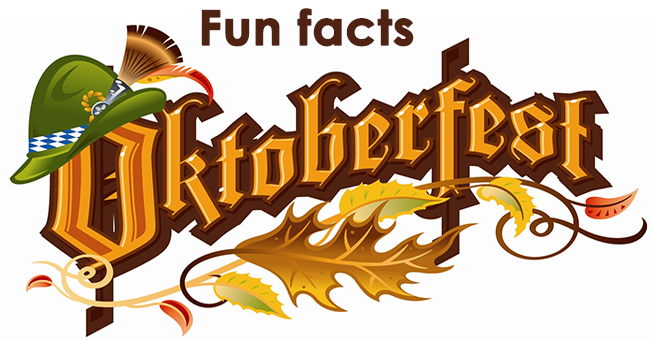 |
Oktoberfest originally began as a celebration of the marriage of Crown King Ludwig and Queen Therese of Saxe-Hildburghausen in October of 1810. Today, the festival ground is called Theresienwiese, Wiesn for short, in honor of Queen Therese.
Only six breweries are allowed to participate in Oktoberfest , all brewing within the Munich city limits: Hofbräuhaus München, Spaten-Franziskaner-Bräu, Paulaner Bräu, Löwenbräu, Hacker-Pschorr Bräu and Augustiner Bräu. Each brewery has a tent where only their beer is served.
It is the largest people’s fair in the world. Approximately six and a half million people come to attend the festival with 72 percent of the festival-goers coming from Bavaria. Approximately fifteen percent of them came from foreign countries in Europe, America, Canada, Australia, and East Asia.
Oktoberfest Zinzinnati (Cincinnati Ohio) is the second biggest Oktoberfest celebration in the world - the only one bigger is the original in Munich.
Zinzinnati is also home to the Running of the Wieners, a dachshund race that draws owners and pups from near and far to compete for the prestigious championship title.
Traditionally visitors wear Bavarian hats to Oktoberfest, or Tirolerhüte. The more tufts of goat hair your hat has, the wealthier you are. Of course, the tufts are now synthetic, so if they get soaked in beer you won't smell like a wet goat.
A dirndl is a type of traditional dress worn in Germany – especially Bavaria – Switzerland, Liechtenstein, Austria and South Tyrol, based on the historical costume of Alpine peasants.
The original incarnation of Oktoberfest was a country fair with horse-racing, contests and even freak shows! Horse-racing is no longer part of the festivities, but it still has that carnival atmosphere.
Raise your stein and say "prost!" before knocking back a lager at Oktoberfest. Another popular phrase is "zum wohl" meaning "to your health." Wishing good health to your drinking partners is a universal cheer.
The long, skinny alphorn that is often associated with German Oompah bands actually originated in Switzerland and was used as a way for Alpine farmers in Switzerland to communicate with people in surrounding villages.
Despite its name, this annual event commences in late September—two weeks before the first Sunday in October, to be exact. When it was decided that the festival would be an annual celebration, it was thereby lengthened and moved up in the year to capitalize on the better weather of early autumn.
Glücklich Oktoberfest!
|
| |
| |
 |
Super Bowl LIV will take place Feb 2, 2020, at Miami’s Hard Rock Stadium, the Latina dynamic duo of Jennifer Lopez and Shakira are confirmed to co-headline the Super Bowl 2020 halftime show. As of today we are still waiting for the name of the singer of the National Anthem to be announced for 2020.
The first football game was played in 1869 between Rutgers and Princeton in New Jersey. At the time, the rules did not resemble the modern game we are used to seeing.
Football is the most popular sport in the United States. The National Football League governs the game at the professional level for a 17-week season for 32 teams in two conferences, the American Football Conference and the National Football Conference.
There are seven officials during a football game. The seven officials each watch for different infractions and are each responsible for different things. The referee is the highest ranking of the officials and has the most responsibility in terms of oversight. The other officials are the umpire, the back judge, the head linesman, the side judge, the line judge and the field judge.
The NFL Hired Its First Full-time Female Official in 2015 (Sarah Thomas).
The New England Patriots were almost known as The BS Patriots or The Bay State Patriots.
Kickers and Punters tend to play a long time in the NFL however there are two players not at that position to play in over 300 games. They are Wide-Receiver Jerry Rice and Quarterback Brett Favre.
If you signed up for the Green Bay Packers season ticket waiting list today, you'd have to wait almost 1,000 years to get your tickets.
Only one NFL team has ever three-peated and never once in the Super Bowl era. Vince Lombardi’s Green Bay Packers of 1966-68 won three NFL championships in a row, but no team has ever pulled off the feat in the Super Bowl era.
Despite the misnomer that the NFL can only play Sunday, Monday and Thursday, the league has actually plated games on every day of the week. There was the infamous 2010 snow game on Tuesday night in Philadelphia, the Wednesday night season opener in 2012 that was moved to not interfere with Barack Obama’s acceptance speech at the Democratic National Convention, all those terrible Thursday games that are the bane of the league’s existence (Thanksgiving day excluded, of course) and a number of Friday games moved for weather or to give the league a Christmas day, Christmas Eve or New Year’s Eve showcase.
Wilson has been making NFL footballs for over 70 Years and has an exclusive contract to provide the footballs for NFL games. They firm has provided the sports league with footballs since 1941. Wilson currently produce an astonishing 4,000 footballs every day.
Carl Weathers (Apollo Creed) played two seasons with the Oakland Raiders in the early 1970's.
The total audience for the first televised football game in 1939 was 500, about 112,200,500 less than watched last year's Super Bowl.
The Dolphins and Patriots are known for their undefeated regular seasons, but the Chicago Bears have also done it twice. (1934 and in 1942) However The Dolphins have the distinction of a complete undefeated season as they took the streak right through the post season.
The timing of when the AFC-NFC title game got its name is slightly disputed, but the legend is Kansas City Chiefs owner Lamar Hunt coined it based off the “super ball” toy his daughter and son played with.
A total of 12 teams have never won a Super BowlThat list includes: the Browns, Lions, Jaguars, Texans, Chagers, Titans, Cardinals, Panthers, Falcons, Bengals, Bills and Vikings. Of that group, the Browns, Lions, Jaguars and Texans have never made it to the big game in their existence.
There’s only one starting quarterback who has won a Super Bowl title with two different teams is Peyton Manning. Only one man has been named MVP for the losing team is Chuck Howley. The Dallas Cowboys lost to the Baltimore Colts in Super Bowl V, but Howley (two interceptions) was voted most valuable player.
The game has gone to overtime once. That was Super Bowl LI, better known as the championship game in which the Falcons blew a 28-3 lead to the Patriots.
The AFC team and NFC team take turns being the home teamAlso, if you didn’t know there was a designated home and away team despite the fact that it’s played at a neutral site, now you do.
The Pittsburgh Steelers have won the most Superbowls ~ 6 in total
The Patriots and Broncos have lost the most Super Bowls
Super Bowl LIII was the lowest scoring Super Bowl in the game’s history The Patriots beat the Rams 13-3.
The game has been played in 10 different states.They would be Arizona, California, Florida, Georgia, Indiana, Louisiana, Michigan, Minnesota, New Jersey and Texas.
Super Bowl Sunday is must-see television for many people, and along with that viewing comes a lot of food. Millions of pounds of comfort food will be consumed by football fans while they watch the big game. Deliveries of pizzas will increase by almost 60 per cent around kickoff. Popular items eaten include: 1.25 billion chicken wings, 12.5 million pounds of bacon, 11.2 million pounds of potato chips, 10 million pounds of ribs, 8.2 million pounds of tortilla chips, 2.8 million pounds of popcorn and 3 million pounds of nuts.
While America cheers on their favorite teams, some have more on the line than the average fan. Super Bowl is probably one of the biggest gambling days of the year. According to the American Gaming Association, fans will wager an estimated $4.7 billion this Super Bowl.
The Super Bowl’s commercials have become nearly as big a draw as the game itself. A 30-second spot can go for up to $5 million today. A 30-second commercial for the first Super Bowl, played in 1967, cost a mere $42,000.
According to TV Guide these are the Top 25 Superbowl Commercials of ALL TIME! http://www.tvguide.com/news/the-25-greatest-super-bowl-commercials-ever/
Touchdown!
|
| |
| |
|
In the 16th century, France celebrated the New Year just like we do today, except they celebrated on April 1st. In 1562, Pope Gregory changed the calendar to the one we use today and from then on, the New Year began on January 1st. News didn't travel quickly (no social media) and didn't know about the new calendar, or they ignored the new calendar and kept celebrating on April 1st. That is how they were called April fools and tricks were played on them. In France, the April Fool's is called "April Fish" Poisson d'Avril, (this is one theory).
Others believe that the idea came from Roman jesters during the time of Constantine I in the third and fourth centuries A.D. As the story goes, jesters successfully petitioned the ruler to allow one of their elected members to be king for a day. So, on April first, Constantine handed over the reins of the Roman Empire for one day to Kugel, his jester. Kugel decreed that the day forever would be a day of foolery.
Another theory is that April Fool’s Day developed out of European spring festivals of renewal, in which pranks and disguises were common.
Yet another theory or connection is from both the Indian spring festival Holi and the medieval Feast of Fools, which parodied Christian rituals.
Celebrating throughout the world
United States/North America -
April Fools' Day, also called All Fools' Day, is celebrated every April 1st in the United States. While it is not officially recognized as a holiday, many celebrate by pranking, or pulling practical jokes, most often at work.
ANCIENT ROME -
The custom of playing practical jokes on friends was part of the celebrations in ancient Rome on March 25 (Hilaria). The timing seems related to the vernal equinox and the coming of spring, the time when nature fools us with sudden changes between showers. and sunshine.
ENGLAND -
In England, tricks can be played only in the morning. If a trick is played on you, you are a "noodle". Widespread observance in England began in the 18th century.
SCOTLAND -
In Scotland, April Fools Day is 48 hours long and you are called an "April Gowk", which is another name for a cuckoo bird and an emblem for a fool. Pinning a tail to someone's rear or taping signs to people's backs are popular second-day pranks.
SPAIN -
Dia de los Santos Inocentes is held in Spain on December 28th. This is The Feast of the Holy Innocents. It is celebrated on April Fool's Day, with practical jokes.
Turkey -
In Istanbul, hundreds of thousands of balloons are released into the air above the famous Istiklal Avenue to signify the beginning of April Fool’s Day festivities.
Portugal -
Portugal doesn’t always celebrate April Fool’s Day on April 1, but rather on the Sunday and Monday before Lent. What’s the major prank in this country? Throwing flour at your friend’s face.
Belgium -
In Belgium children will lock the doors on their parents or teachers, letting them in only in exchange for sweets.
Ukraine -
Ukrainians in the port of Odessa dress as comical characters for the opening of Fools' Day Festival, an official holiday with talent competitions.
Some famous April Fools Pranks
The BBC's classic 1957 Swiss Spaghetti Harvest story. The three-minute report, entitled "Panorama," showed strands of spaghetti being plucked from bushes. This resulted in many phone calls to the BBC, most of which were from viewers who believed the tale and wanted to know where they could buy spaghetti plants.
On April 1, 1996, when Taco Bell jokingly announced it had purchased Philadelphia's Liberty Bell and renamed the national treasure Taco Liberty Bell, the company received thousands of calls and generated nearly $25 million in free publicity. Burger King followed suit two years later by advertising a left-handed Whopper.
In its April 1985 edition, Sports Illustrated published an article by George Plimpton that described an incredible rookie baseball player who was training at the Mets camp in St. Petersburg, Florida. The player was named Sidd Finch (Sidd being short for Siddhartha, the Indian mystic in Hermann Hesse's book of the same name). He could reportedly pitch a baseball at 168 mph with pinpoint accuracy. The fastest previous recorded speed for a pitch was 103 mph. Finch showed up at the Mets camp in Florida, and so impressed their manager that he was invited to attend training camp. When pitching he looked, in the words of the catcher, "like a pretzel gone loony." Finch frequently wore a hiking boot on his right foot while pitching, his other foot being bare. His speed and power were so great that the catcher would only hear a small sound, "a little pft, pft-boom," before the ball would land in his glove, knocking him two or three feet back. One of the players declared that it was not "humanly possible" to hit Finch's pitches. Unfortunately for the Mets, Finch had not yet decided whether to commit himself to a career as a baseball player, or to pursue a career as a French Horn player. He told the Mets management that he would let them know his decision on April 1.
The 1 April 1982 issue of the Daily Mail reported that a local manufacturer had sold 10,000 "rogue bras" that were causing a unique and unprecedented problem, not to the wearers but to the public at large. Apparently the support wire in these bras had been made out of a kind of copper originally designed for use in fire alarms. When this copper came into contact with nylon and body heat, it produced static electricity which, in turn, was interfering with local television and radio broadcasts. The chief engineer of British Telecom, upon reading the article, immediately ordered that all his female laboratory employees disclose what type of bra they were wearing.
2000: A news release sent to the media stated that the 15th annual New York City April Fool's Day Parade was scheduled to begin at noon on 59th Street and would proceed down to Fifth Avenue. According to the release, floats in the parade would include a "Beat 'em, Bust 'em, Book 'em" float created by the New York, Los Angeles, and Seattle police departments. This float would portray "themes of brutality, corruption and incompetence." A "Where's Mars?" float, reportedly built at a cost of $10 billion, would portray missed Mars missions. Finally, the "Atlanta Braves Baseball Tribute to Racism" float would feature John Rocker who would be "spewing racial epithets at the crowd." CNN and the Fox affiliate WNYW sent television news crews to cover the parade. They arrived at 59th Street at noon only to discover that there was no sign of a parade, at which point the reporters realized they had been hoaxed. The prank was the handiwork of Joey Skaggs, an experienced hoaxer. Skaggs had been issuing press releases advertising the nonexistent parade every April Fool's Day since 1986.
Even the gods love jokes......Plato
Beware....the joke may be on You! |
| |
| |
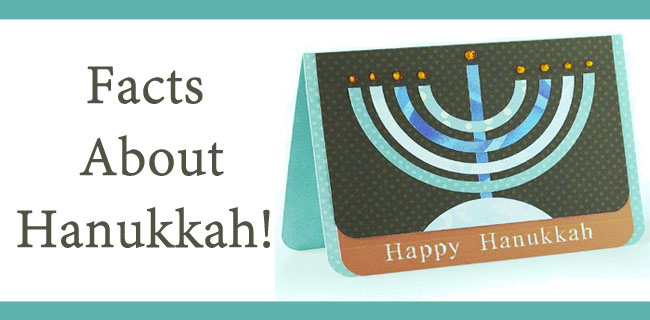 |
Hanukkah is celebrated around the world for eight days and nights. Hanukkah celebrates the victory of the Maccabees or Israelites over the Greek-Syrian ruler, Antiochus. After three years of fighting, in the year 3597, or about 165 B.C.E., the Maccabees victoriously reclaimed the temple on Jerusalem's Mount Moriah.
Next they prepared the temple for rededication -- in Hebrew, Hanukkah means "dedication." In the temple they found only enough purified oil to kindle the temple light for a single day. But miraculously, the light continued to burn for eight days.
The lighting of the menorah, known in Hebrew as the hanukiya, is the most important Hanukkah tradition. A menorah is a candlestand with nine branches. Usually eight candles - one for each day of Hanukkah - are of the same height, with a taller one in the middle, the shamash ("servant"), which is used to light the others. Each evening at sundown, one more candle is lit, with a special blessing.
A dreidel, or sivion is a four-sided top that has a Hebrew letter on each side. In America, the letters stand for "A Great Miracle Happened There". Then, there is the gift giving tradition, which has evolved from the ancient gelt giving tradition. Since Hanukkah falls near Christmas, it got influenced by the latter's gift giving tradition as well. All these traditions give significant meaning and importance to the festival.
Many traditional Hanukkah foods are cooked in oil, in remembrance of the oil that burned in the temple. In the United States, the most widespread Hanukkah food is latkes, or potato pancakes, a custom that may have developed in Eastern Europe. In Israel, the favorite Hanukkah food is sufganiya, a kind of jelly donut cooked in oil. Israelis eat sufganiyot for more than a month before the start of Hanukkah.
During the eight days of Hanukkah, the entire Hallel (psalms of praise) is said. During the eight days of Hanukkah, the passage “Al Hanissim”, expressing thanks to God for the miracles of Hanukkah, is inserted into the prayers.
Hanukkah is celebrated in the home beginning on the 25th day of the Jewish month of Kislev.
In ancient times, oil was used in the menorah. Over time, candles were substituted for the oil.
Is it Chanukah? Or Hanukkah? If you want to fit in with the crowd, opt for the Hanukkah spelling, now the most widely used of the choices. However, don’t forget Chanukah, the second most often used spelling and the favorite of traditionalists. Both are correct.
In the U.S., where Santa Claus rules the month of December, some people of Jewish faith have incorporated a little bit of Christmas into their Hanukkah spirit. Some families opt to give gifts each night of Hanukkah; others may decorate their house with a "Hanukkah bush." Even though the two holidays have vastly different religious and historical origins and focus, both Christmas and Hanukkah are a beautiful opportunity to open up one's house and heart and spread some joy.
The 2017 eight-day Festival of Lights begins the evening of Tuesday, December 12th at sundown.
Happy Chanukah/Hanukkah! |
| |
| |
| |
| |
| |
 |
Santa didn’t always have a beard.17th century Dutch settlers brought the jolly man to America's shores and their image of Santa was without his trademark beard. He was based on the traditional Dutch winter figure Sinterklaas. Artist and political cartoonist Thomas Nast added the beard in 'Harper's Weekly' during the latter part of the 19th century.
NORAD's "Santa Tracker" started from an error in a newspaper ad but it wasn't done intentionally. Back in 1955, a Sears ad printed the phone number of a Colorado Springs store so children could tell Santa Claus what they wanted for Christmas. The number was a misprint and instead sent children to the hotline for Colonel Harry Shoup, Director of Operations for the US Continental Air Defense. The calls poured in and instead of blocking the number, the Colonel ordered his staff to give children updates on Santa's flight coordinates.The tradition has continued to this very day.
Santa has a real postal zip code zip... H0H 0H0, of course.
Donner and Blitzen weren't originally part of Santa’s reindeer "Dunder" and "Blixem." The names, much like Santa, were taken from the Dutch words that mean "thunder and lightning." Over time the names were edited.
Rudolph the Red Nose Reindeer' was created as a promotion for Montgomery Ward
Jesus wasn't born on December 25 he was probably born in the spring, hence descriptions of shepherds herding animals. But in the 4th century, when the Catholic Church decided to recognize Jesus' birth as an official holiday, Pope Julius I chose December 25 for the Feast of the Nativity.
Massachusetts Puritans actually banned Christmas by law (From 1659 to 1681) since Puritans didn't believe it to be the true date of Jesus's birth. The law carried a punishment of five shillings.The December Dates actually have roots in pagan festivals such as Saturnalia and Kalends which went against their strict Puritanical beliefs.
It's somewhat surprising that the same puritanical minds (or maybe not) also created the first American batch of eggnog at Captain John Smith's 1607 Jamestown settlement.The word nog comes from the word grog; that is, any drink made with rum.
Christmas was so inconsequential in early America that after the Revolutionary War, Congress didn't even bother taking the day off to celebrate the holiday, deciding instead to hold its first session on Christmas Day in 1789. It took almost a century for Congress to proclaim it a federal holiday. (Shocking we know)!
'Jingle Bells' was written for Thanksgiving not Christmas. Composer James Lord Pierpont wrote the song in the 1850s to play for his Boston Sunday school class during Thanksgiving as a way to commemorate the famed Medford sleigh races. Kids and adults loved the song and eventually changed the lyrics to fit Christmas.
The first artificial Christmas tree came from Germany and it was made out of dyed goose feathers and one of the first Commercially Sold artificial Christmas trees was made from toilet brushes. Addis Brush Company used their toilet brush weaving machinery to create pine-like branches for their fake Christmas trees. They were less flammable and held heavier decorations.
Teddy Roosevelt banned Christmas trees at the White House. Was the 26th President a Scrooge? Nope, just an avid outdoorsmen and conservationist who found deforestation revolting.There are two competing claims as to which president was the first to place a Christmas tree in the White House. Some scholars say President Franklin Pierce did in 1856; others say President Benjamin Harrison brought in the first tree in 1889. President Coolidge started the White House lighting ceremony in 1923.
Five Months into World War One troops along the Western front took a Christmas Eve break from fighting to sing carols to one another across the battlefield. On Christmas morning, German soldiers emerged from the trenches and began to approach Allied troops while calling out "Merry Christmas" in English. Luckily, it wasn't a trick; dozens of British fighters came out to greet them and shake hands, some even exchanging cigarettes as gifts. Later dubbed the Christmas Truce of 1914, it was one of the last examples of wartime chivalry.
Merry Christmas, Happy Holiday's, Season's Greetings and Many Peaceful Blessings in the New Year from all of us at Van Bourgondien Nursery! |
| |
 |
The earliest known Christmas tree decorations were apples. At Christmastime, medieval actors would use apples to decorate paradise trees (usually fir trees) during “Paradise Plays,” which were plays depicting Adam and Eve’s creation and fall.
Norwegian scientists have hypothesized that Rudolph’s red nose is probably the result of a parasitic infection of his respiratory system. (ewww)
According to data analyzed from Facebook posts, two weeks before Christmas is one of the two most popular times for couples to break up. However, Christmas Day is the least favorite day for breakups.
On Black Friday, 55% of parents check the availability of items on their smartphones prior to going to the store. (fact check)
62% of shoppers Tweet about holiday purchases they’ve made.
67% of consumers have purchased a gift they saw on social media.
Most of Santa’s reindeer have male-sounding names, such as Blitzen, Comet, and Cupid. However, male reindeers shed their antlers around Christmas, so the reindeer pulling Santa’s sleigh are likely not male, but female or castrated.
According to the Guinness world records, the tallest Christmas tree ever cut was a 221-foot Douglas fir that was displayed in 1950 at the Northgate Shopping Center in Seattle, Washington.
The movie "How the Grinch Stole Christmas" (2000) features more than 52,000 twinkle lights, about 8,200 ornaments, and nearly 2,000 candy canes.
The world’s largest Christmas stocking measured 106 feet and 9 inches (32.56 m) long and 49 feet and 1 inch (14.97 m) wide. It weighed as much as five reindeer and held almost 1,000 presents. It was made by the Children’s Society in London on December 14, 2007.
Each year there are approximately 20,000 “rent-a-Santas” across the United States. “Rent-a-Santas” usually undergo seasonal training on how to maintain a jolly attitude under pressure from the public. They also receive practical advice, such as not accepting money from parents while children are looking and avoiding garlic, onions, or beans for lunch.
In Poland, spiders or spider webs are common Christmas trees decorations because according to legend, a spider wove a blanket for Baby Jesus. In fact, Polish people consider spiders to be symbols of goodness and prosperity at Christmas.
A Yule log is an enormous log that is typically burned during the Twelve Days of Christmas (December 25-January 6). Some scholars suggest that the word yule means “revolution” or “wheel,” which symbolizes the cyclical return of the sun. A burning log or its charred remains is said to offer health, fertility, and luck as well as the ability to ward off evil spirits.
The word Mistletoe literally means "Dung Twig" because mistletoe springs from bird droppings!
The poinsettia is native to Mexico and was cultivated by the Aztecs, who called the plant Cuetlaxochitl (“flower which wilts”). For the Aztecs, the plant’s brilliant red color symbolized purity, and they often used it medicinally to reduce fever. Contrary to popular belief, the poinsettia is not poisonous, but holly berries are.
It is estimated that the single “White Christmas” by Irving Berlin is the best selling single of all time, with over 100 million sales worldwide.
Jingle Bells was the first song sung in Space.
"We Wish You a Merry Christmas" was originally a threat. The ever-popular song was originally sung, loudly and repeatedly, by crowds of rowdy, lower-class servants demanding booze from their masters... or else. (I.e. "We won't go until we get some!")
In 1962, the first Christmas postage stamp was issued in the United States.
Commissioned by Sir Henry Cole (1808-1883), British illustrator John Callcott Horsley (1817-1903) invented the first Christmas card in 1843
The people at Reynolds make a substantial amount of money selling foil during the Yuletide season. It has been confirmed that at least 3000 tons of foil are used to wrap turkeys annually.
Leftovers can sometimes be your enemy. Spoilt leftovers are responsible for 400,000 cases of post Christmas associated illnesses.
Merry Christmas! |
| |
 |
The tradition of Christmas wreath is said to have begun in Germany in the 1500s, by Lutherans, and the idea possibly stems from the use of wreaths in Ancient Greek and Roman times, that were used to crown those with significant achievements or community rank, or placed on their door.
The wreath has been used symbolically for centuries. Pre-Christian, or Pagan, cultures placed much importance on the December celebration of the Winter Solstice, the shortest day of the year. For them, this was a time of death and rebirth, a celebration of the end of the ever shortening days and the anticipation of the coming promise of spring. As part of many celebrations, evergreen wreaths were gathered as a sign of the approaching spring light. In Sweden, wreaths were fashioned for similar purposes, with the addition of candles that symbolized the power of the sun.
Each year, Advent begins on the Sunday that falls between November 27 and December 3, and it continues through the four Sundays leading up to Christmas Day.
‘Christmas wreaths’ are also known as ‘Christmas crowns’, ‘advent crowns’ or ‘advent wreaths’.
Christmas wreaths are typically shaped as a ring, made with living, dried or imitation vegetation, including twigs, flowers and leaves, as well as ribbons and other Christmas-related objects.
The idea to use candles in Christmas wreaths to countdown the Advent, was possibly invented by a German pastor, Johann Wichern, in the mid 1800s, as a daily advent calendar for children.
Evergreen materials also indicate life. Classic combinations include cedar (strength and healing); fir, pine and yew (immortality); prickly holly leaves (The Crown of Thorns); and laurel (victory over pain or persecution).
Pine cones, nuts and seedpods celebrate the rebirth that comes through faith.
Traditionally The Advent Wreaths colored candles are lit in sequence:One purple on the first Sunday, two purple ones on the second, two purple and the rose on the third, and all of them on the fourth Sunday. Many families use white instead, lighting one additional candle each week throughout the Advent period. Some also add a fifth candle (white), which is placed in the center and lit on Christmas eve to signify Jesus's Birth.
Some families say a prayer when they light the candles, others simply use the candles as a way to mark the weeks leading to Christmas. No matter what approach you choose, wreaths are a wonderful way to continue a long-standing tradition or create a new one for your family’s holiday celebrations.
The wreath has evolved into a sign of welcoming and an acknowledgment of holiday cheer for this season that emphasizes generosity, giving, and the gathering of loved ones. |
|
| |
|
|
|
 |
|
|

